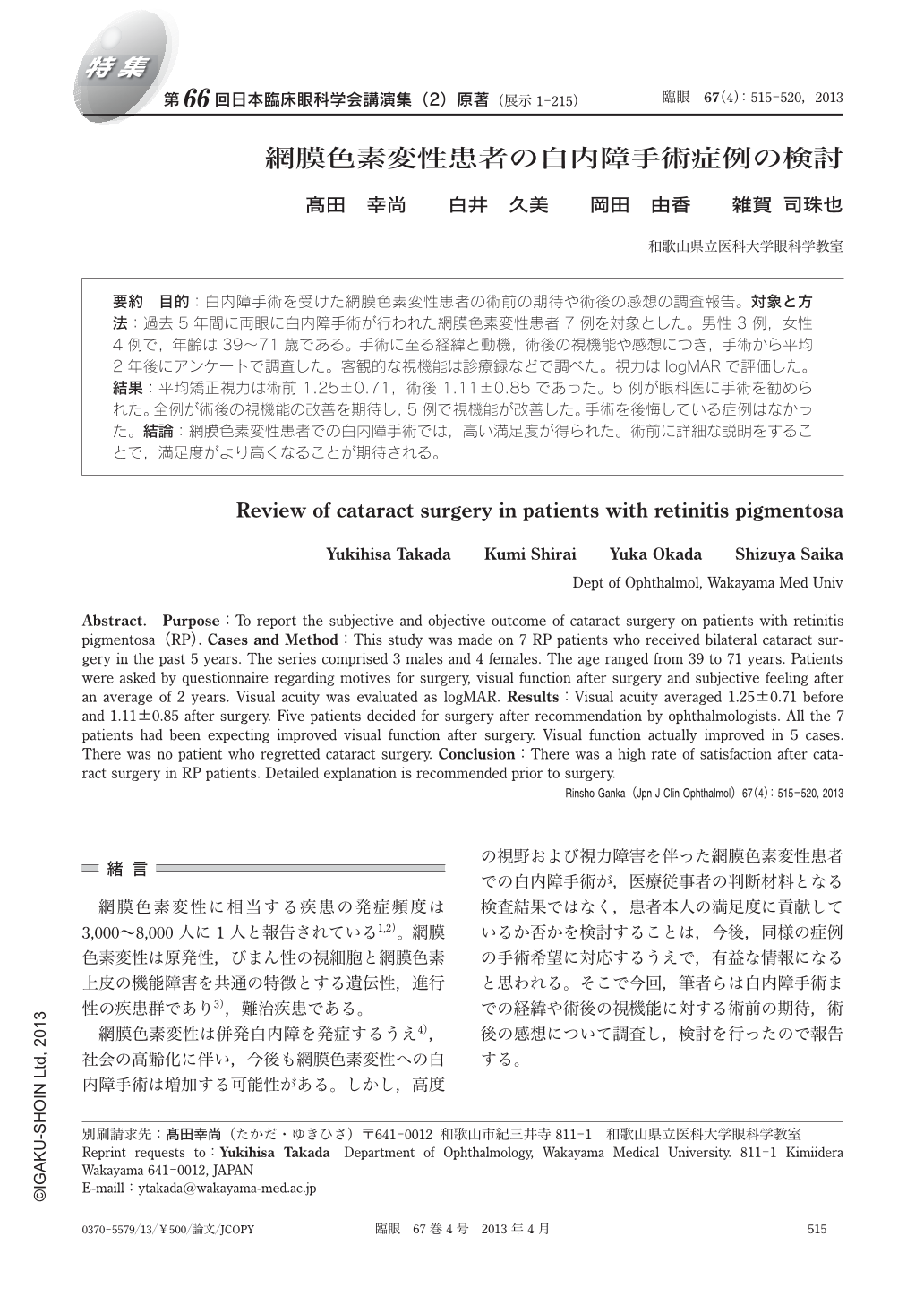3 0 0 0 OA 点眼薬含有塩化ベンザルコニウムの角膜上皮に対する影響
- 著者
- 清野 慧至 髙田 幸尚 雑賀 司珠也
- 出版者
- 公益社団法人 日本薬学会
- 雑誌
- YAKUGAKU ZASSHI (ISSN:00316903)
- 巻号頁・発行日
- vol.141, no.1, pp.35-39, 2021-01-01 (Released:2021-01-01)
- 参考文献数
- 25
- 被引用文献数
- 3
Eyedrops often contain additives other than active pharmaceutical ingredients, such as preservatives. The most frequently used preservative is benzalkonium chloride (BAC). When the ocular surface is exposed to eyedrops, the active pharmaceutical ingredients and additives can cause corneal epithelial disorder. Particularly in clinical settings, there is great interest in corneal epithelial disorders resulting from the use of glaucoma eyedrops, which is inevitable when instilled for a long period of time after the onset of disease. At the authors' institute, glaucoma is treated with consideration of reducing corneal epithelial disorder while ensuring the effect of lowering intraocular pressure by the appropriate choice of eyedrops. In this review, we show the examples of the retrospective studies. Sodium hyaluronate eyedrops are prescribed for corneal epithelial disorders such as superficial punctate keratitis associated with dry eye. Prescribable concentrations of sodium hyaluronate in Japan are 0.1% or 0.3%, and the 0.3% formulation does not contain BAC. The authors' study showed that 0.3% sodium hyaluronate pretreatment reduced the cytotoxicity of BAC in cultured corneal epithelial cells, whereas an in vivo study in mice showed that a 0.3% sodium hyaluronate instillation was suggested and that the drug may enhance the cytotoxicity of separately administered BAC. It is suggested that sodium hyaluronate prolonged the retention of BAC on the ocular surface. However, there have been no reports of this problem in the clinical setting. It is important for ophthalmologists to understand the properties of additives other than the active pharmaceutical ingredients in eyedrops.
1 0 0 0 網膜色素変性患者の白内障手術症例の検討
- 著者
- 髙田 幸尚 白井 久美 岡田 由香 雑賀 司珠也
- 出版者
- 医学書院
- 雑誌
- 臨床眼科 (ISSN:03705579)
- 巻号頁・発行日
- vol.67, no.4, pp.515-520, 2013-04-15
要約 目的:白内障手術を受けた網膜色素変性患者の術前の期待や術後の感想の調査報告。対象と方法:過去5年間に両眼に白内障手術が行われた網膜色素変性患者7例を対象とした。男性3例,女性4例で,年齢は39~71歳である。手術に至る経緯と動機,術後の視機能や感想につき,手術から平均2年後にアンケートで調査した。客観的な視機能は診療録などで調べた。視力はlogMARで評価した。結果:平均矯正視力は術前1.25±0.71,術後1.11±0.85であった。5例が眼科医に手術を勧められた。全例が術後の視機能の改善を期待し,5例で視機能が改善した。手術を後悔している症例はなかった。結論:網膜色素変性患者での白内障手術では,高い満足度が得られた。術前に詳細な説明をすることで,満足度がより高くなることが期待される。
